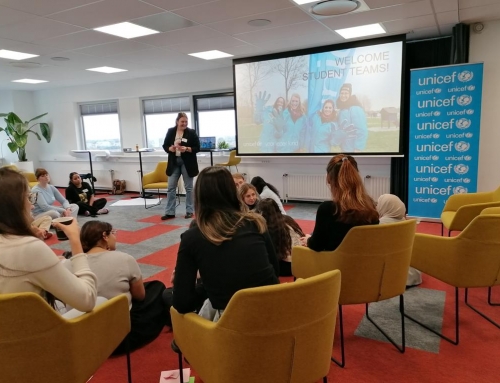Have you ever experienced walking into a room; being overdressed, everyone seeming to know one another and there are no available seats? That feeling that you undergo walking into that room is the same feeling third culture kids have every time they walk into a new education system.
Third culture kid; are people raised in a culture other than their parents’ or the culture of their country of nationality for a significant part of their early development years. (Wikipedia, n.d.)
Growing up I lived in six different countries; Canada, Australia, Greece, Taiwan, England and the Netherlands. Every culture being very diverse which was not easy to adapt to. The experience of starting over in each education system was difficult and made me feel as though I didn’t belong.
Can children succeed in a school in which they do not feel they belong?
A sense of belonging is a basic human need, just like the need for food and shelter. (Maslow, 1943).
In a generation where traditional sources of belonging have moderated due to changing family and community demographics, the education system plays an ever more important role in meeting the need of belonging. (Back, 2003). Kaplan and Johnson (1992) noted that when students who are failing don’t feel accepted in the mainstream, they tend to seek their ‘own sense of belongingness’ in a context that is more antisocial. Gangs become popular because they provide these children with a sense of belonging or acceptance which they cannot find elsewhere. Especially, third culture kids, who are prone to suffering problems of identity.
Adler (1939) theory of belongingness determined that students who felt they belonged had an enhanced sense of worth and increased self- confidence. Whereas when they did not feel they belonged, they felt helpless. Students who feel lonely or isolated will invest more energy in seeking a sense of belonging and support than in learning quadratic equations.
Integration; an act or instance of combining into an integral whole. (Dictionary, n.d.)
The Dutch have difficulty dealing with cultural diversity due to a culture of simple thinking. Dominant views in the Netherlands about the psychological value of children, the value attached to autonomy and other typically Dutch values are unconsciously regarded as superior. As a result, migrants are often not understood and there is no room for the cultural individuality of migrants within the Dutch context. For many migrants, this leads to an isolated experience of their own culture, without being able to link this to Dutch cultural views. While that is precisely where the opportunities lie for a multicultural society. (A Dije, 2010)
The development of the Dutch language is central within a ‘nieuwkomersgroep’. The teacher works on the vocabulary expansion of the children, oral language skills (listening and speaking) and written language skills (mainly reading). A third culture kid must get used to the first period in the Netherlands and at the new school. After a year, they will flow out to the regular group.
I have done a lot of research within the topics of ‘third culture kids’ and ‘nieuwkomersgroepen’, through this I have been able to make my own conclusions based on analyzing the research. I found it interesting to gain a greater understanding and new insights by joining an education system for a day. The Zuidwester gave me the opportunity to join their nieuwkomersgroep for a day so that I could experience what happens within the classroom setting.
What became clear to me was that I had no idea what the backgrounds were of each child. Which I found a pity as different cultures, norms and values are very interesting to share. I believe that children can also learn by sharing their cultures. Due to this insight, I started to research what works within an education curriculum and what does not. I came across the term ‘culturally responsive teaching’. 
I believe that by immersing children in the culture from which they originate, they will be able to create their own sense of belonging. I want to create a process in which educational systems focus more on culturally responsive teaching to allow successful integration to take place in the classroom. Culturally Responsive Teaching is a pedagogy that recognizes the importance of including students’ cultural references in all aspects of learning (Ladson-Billings,1994). The key to being effective in a multicultural classroom is to relate lesson content to students’ backgrounds. Teaching that ignores student norms of behavior and communication provokes student resistance, while teaching that is responsive prompts student involvement. (Olneck 1998).
How can we apply a method that allows children to include their cultural frame of reference within the educational curriculum, which will have a positive effect on their development within the classroom?
References
Adler (1939) Theory of belonging
Retrieved 25 March from https://alfredadler.edu/about/alfred-adler-theory-application
Back (2003) Pedagogy of belonging
Retrieved 25 March from https://www.cyc-net.org/cyc-online/cycol-0303-belonging.html
Dictionary (n.d.) Integration
Retrieved 25 March from https://www.lexico.com/en/definition/integration
Klaphan and Johnson (1992) Diversity
Retrieved 25 March from https://www.jnj.com/about-jnj/diversity
Ladson- Billings (1994) Theory of Culturally relevant pedagogy
Retrieved 25 March from https://journals.sagepub.com/doi/10.3102/00028312032003465
Maslow (1943) Sense of belonging
Retrieved 25 March from https://www.simplypsychology.org/maslow.html
Olneck (1998) Cultural Capital
Retrieved 25 March from https://journals.sagepub.com/doi/10.3102/00028312037002317
Tijn A Dije, K. en I. Zwaan, Beschermjassen, transculturele hulp aan families, Van Gorcum, 2007.
Wikipedia (n.d.) Third Culture Kids
Retrieved 25 March from https://en.wikipedia.org/wiki/Third_culture_kid





